A Guide to Visiting Pisac Ruins, Peru
This is your short guide on how to visit the Pisac Ruins which are located in the colourful and vibrant town of Pisac in the Sacred Valley.
Most tourists arrive to Pisac as part of a tour that includes other Inca sites within the Sacred Valley such as Ollantaytambo or Moray. Whilst tours like that are a fantastic option for those short on time, we suggest dedicating an entire day to visiting Pisac and its Inca ruins if you can.
In this guide, you can read about all the ways to get to Pisac from Cusco both independently or with a tour. You can also read about our suggested way to visit the Pisac Ruins so you can make the most out of your day trip from Cusco.
If you’d like to see our Cusco and Sacred Valley adventures then check out the Peru Playlist on our YouTube channel.
Disclosure: This post may contain affiliate links, which means we may receive a small commission if you click a link and purchase something. Clicking these links won’t cost you anything, but it will help us to keep this site up and running! Learn more about our affiliate policy.
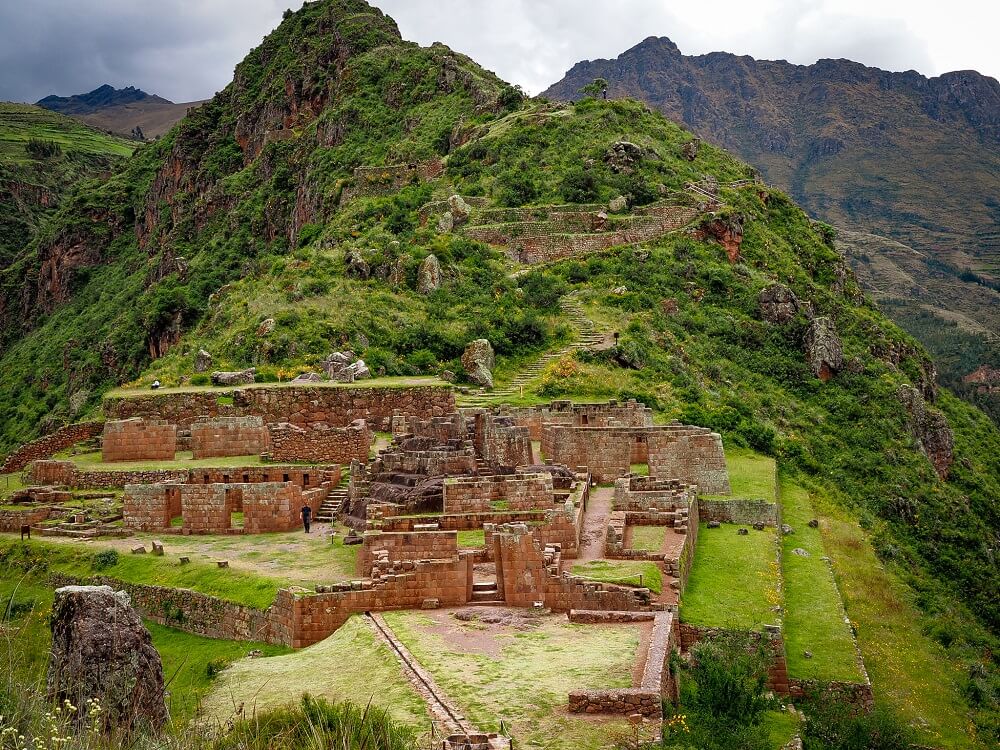
Introducing Pisac and the Pisac Ruins
The small town of Pisac is one of the most vibrant places within the Sacred Valley. Pisac is famous for its stunning Inca ruins and local markets that attract people from all over the world.
Unlike Cusco, which can feel very touristy, Pisac’s charm lies in the fact that the locals keep many of their traditions alive. As you walk around Pisac, you’ll notice that most people will wear their traditional Andean clothes. Women will be walking around in colourful skirts and jackets with their lliclla (women’s mantle) tied around their necks.
The town’s artisan market is a great place to buy some of your traditional souvenirs since prices tend to be a bit lower than in Cusco.
Pisac’s most popular attraction is the Pisac Ruins (Parque Arqueológico Pisac). These Inca ruins are considered one of Peru’s most intact ancient sites. This massive site is built on top of a mountain overlooking the town itself.
Based on its location and size, it was probably an important defensive location positioned to protect Cusco from invaders. It’s a pretty impressive site and also a fantastic example of Inca architecture.
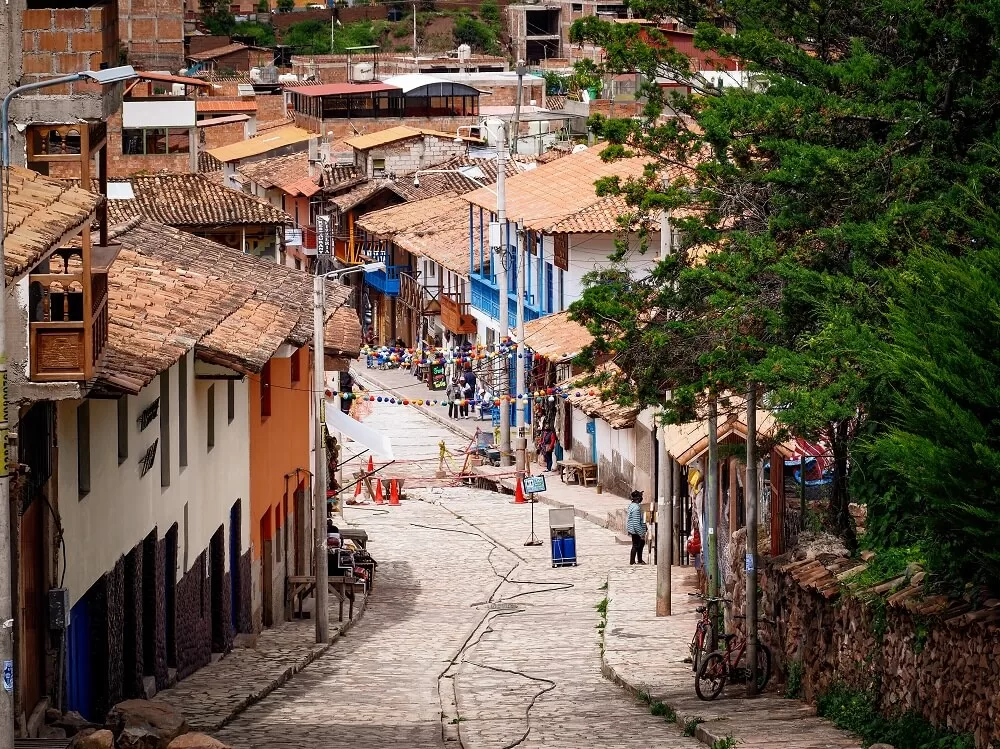
How to Get to Pisac from Cusco
Located only an hour’s drive from Cusco, you can easily access Pisac via a colectivo, a private taxi or a tour.
Colectivo
The cheapest way to reach Pisac is by going with a colectivo. Colectivos are basically minivans that go to a certain destination but can stop anywhere along the route to drop people off. Minivans leave about every hour from Calle Puputi in Cusco. You can either take a taxi or walk to the colectivo station.
Colectivos from this station normally go to Pisac, Urubamba and Calca. A one-way fare to Pisac is only S/.5 (1.40 USD) per person.
Drivers will wait until they have enough people in the minibus for the journey to be worthwhile for them. For this reason we recommend getting to the Colectivo Station early, so that even if you have to wait, you won’t get to Pisac too late in the day.
The colectivo will drop you off just before Puente Pisac, the bridge that crosses the Urubamba River.
Private Taxi
If you don’t feel comfortable taking a Colectivo, you can always get to Pisac by taxi.
You can order a private taxi from your hotel or flag down one on the street. Just make sure it’s a licensed driver!
The cost of a taxi ride will be anywhere between S/. 50 – 90 (13-25 USD) or more one way. Make sure to agree on a price before jumping into a taxi. Due to the much higher cost compared with the colectivo, we personally only recommend taking a taxi if you’re sharing the cost with others.
Since you’ll likely be spending a long time in Pisac, we suggest only booking a one way taxi ride. Unless your driver gives you a great return price and is willing to wait for you.
Top Tip. If you’re getting to Pisac with a taxi and want to return to Cusco with the same driver, we recommend agreeing to be picked up from the car park entrance of the ruins. That way you don’t have to hike back down or find a taxi to take you back to the centre of town first.
Tour
If the above methods sound too complicated, or you’re very short on time and want to fit other nearby Inca ruins such as Ollantaytambo or Maras into your itinerary, then we recommend joining a tour.
Joining a tour is also a great way to learn more about the ruins. You can check out a list of tours here that combine multiple sites listed in our day trips from Cusco post.
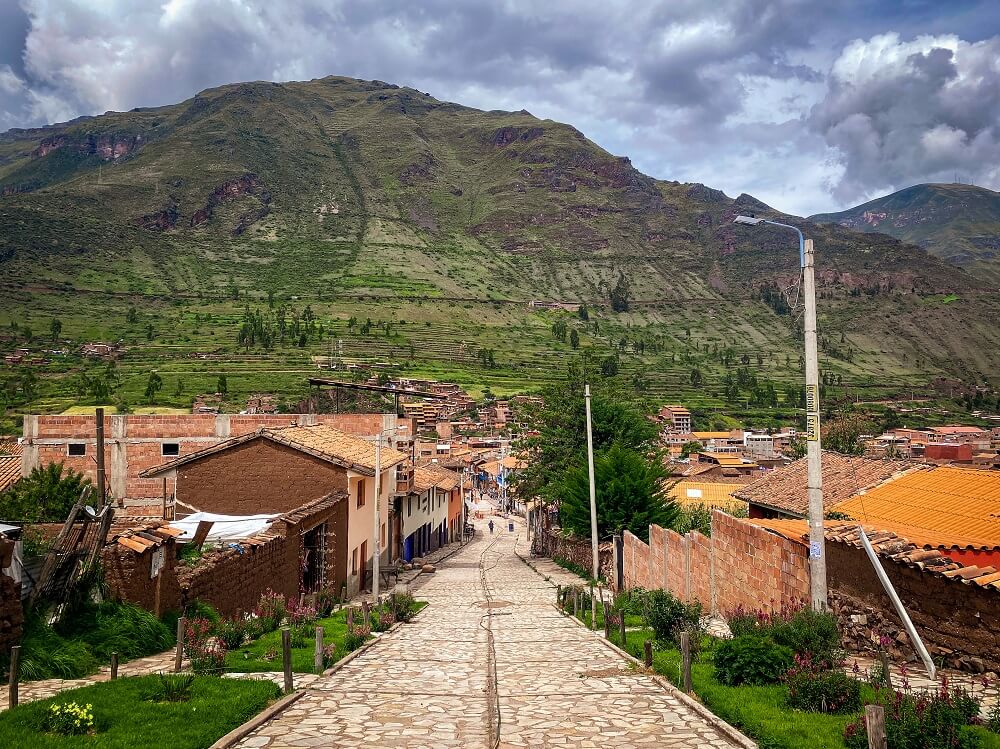
How to Get to the Pisac Ruins from Pisac
There are two entrances to the Pisac Ruins. The pedestrian entrance is located at the end of Intihuatana street. There’s also vehicular access at the top of the hill at the end of the CU-964 road. This road joins up with the 112 that circles around Pisac.
You can either walk, take a taxi from town or get transported to the ruins as part of an organised tour.
It’s worth noting again that colectivos will drop you off just before Puente Pisac. If you wish to walk up to the ruins, then the pedestrian entry through the main plaza is about a 10-15 minute walk. From there it’s going to be a steep uphill hike all the way to the top. Hiking uphill is a great way to prepare yourself for some multi-day trekking such as the Inca Trail or Salkantay Trek.
If you don’t want to hike uphill, then you can just jump in a taxi from the town centre. A taxi ride to Pisac Ruins will cost you around S/.30 (8 USD). The taxi will normally drop you off at the car park entrance of the Pisac Ruins. Then you can either agree for your driver to wait for you, or walk downhill back to Pisac through the ruins and spend a bit longer there before returning to Cusco.
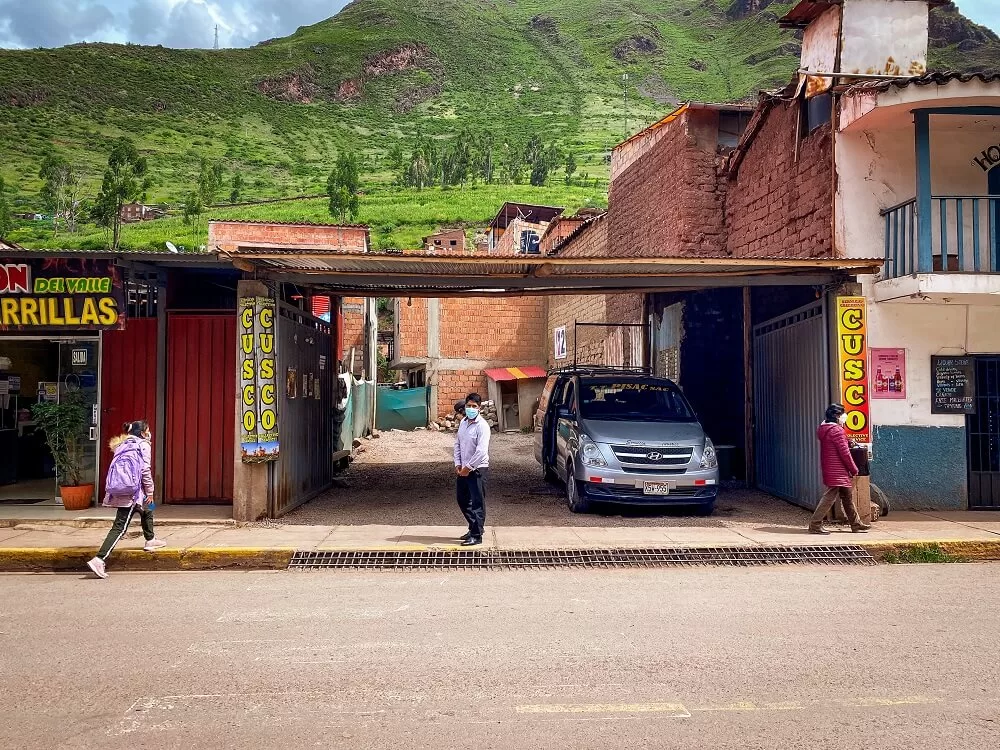
How to Get to Cusco from Pisac
Again, there are three main ways to get back to Cusco from Pisac depending on how you got there in the first place.
You can go back to Cusco with a colectivo departing from either Puente Pisac or from Amazonas Street. The price for your return journey should be S/. 5 (1.40 USD) per person.
You can also get a taxi back to Cusco from Pisac which should cost you about the same price as your journey to Pisac.
Lastly, if you’ve arrived to Pisac as part of an organised tour, they will include your transfer back to Cusco as part of the price.
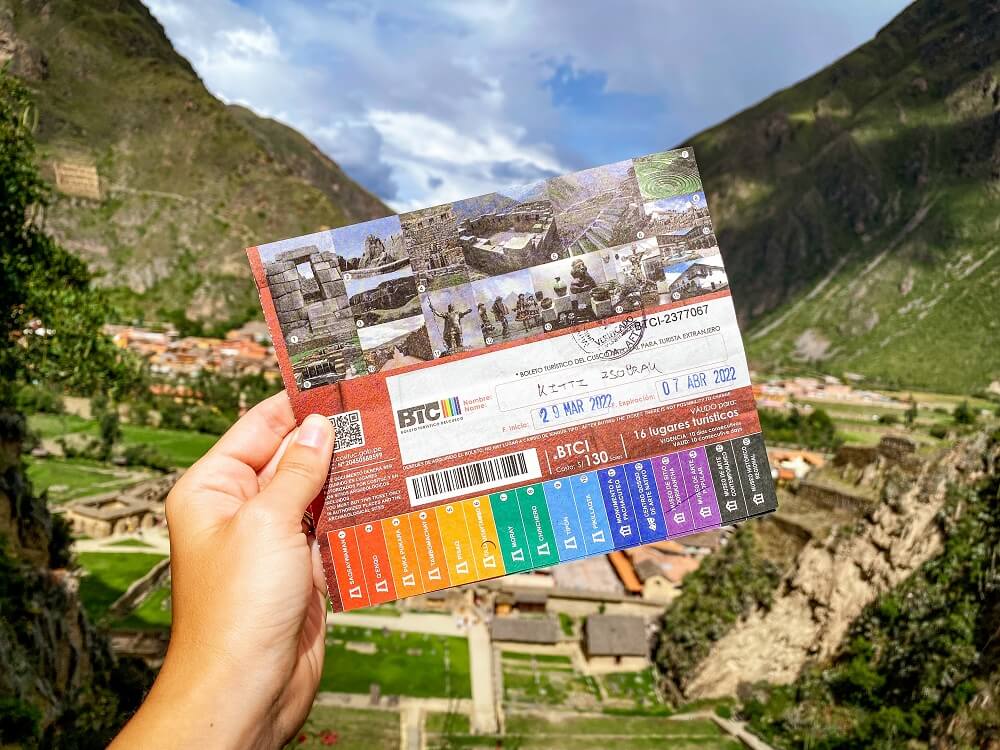
Entry Fee to the Pisac Ruins
You can either enter the ruins with an Integral or a Circuit III Partial Boleto Turistico, which is Cusco’s Tourist Ticket.
The full ticket costs S/.130 (35.40 USD). However, it allows you to visit 16 different sites located in Cusco and around the Sacred Valley.
The Circuit III Partial Tourist Ticket is S/.70 (19 USD) but only lets you visit a few sites within the Sacred Valley.
Click here to read more about the Boleto Turistico.
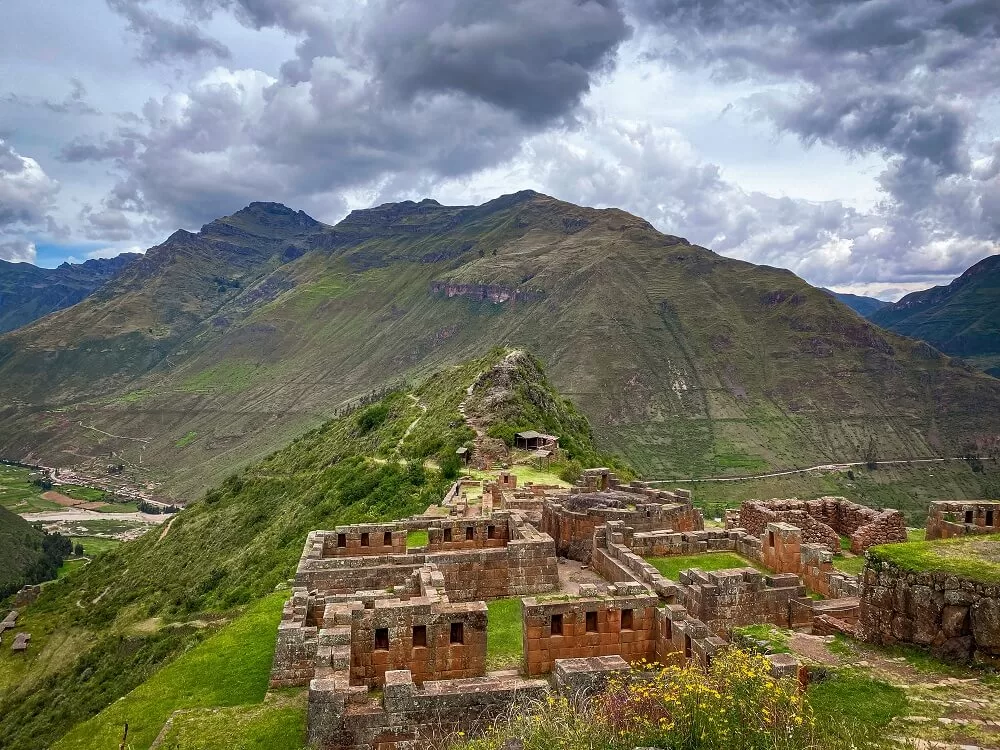
How to Visit the Pisac Ruins
To get the most out of your visit, we recommend walking at least one way through the ruins. You can either walk uphill or downhill depending on your level of fitness or mood on the day. If you’re full of energy – or just want to save some money – you can always walk up and then back down as well.
There are around 15 different points of interest which are shown on a map as you enter the site. They are split into the ‘Lower Ruins’ and ‘Upper Ruins’.

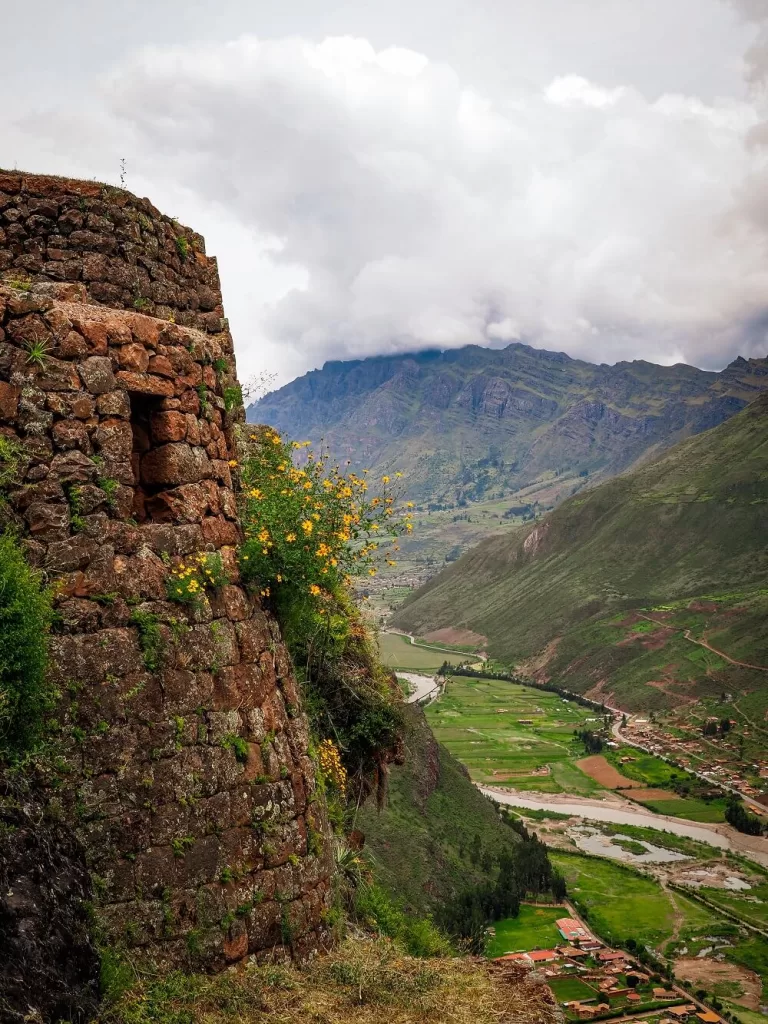
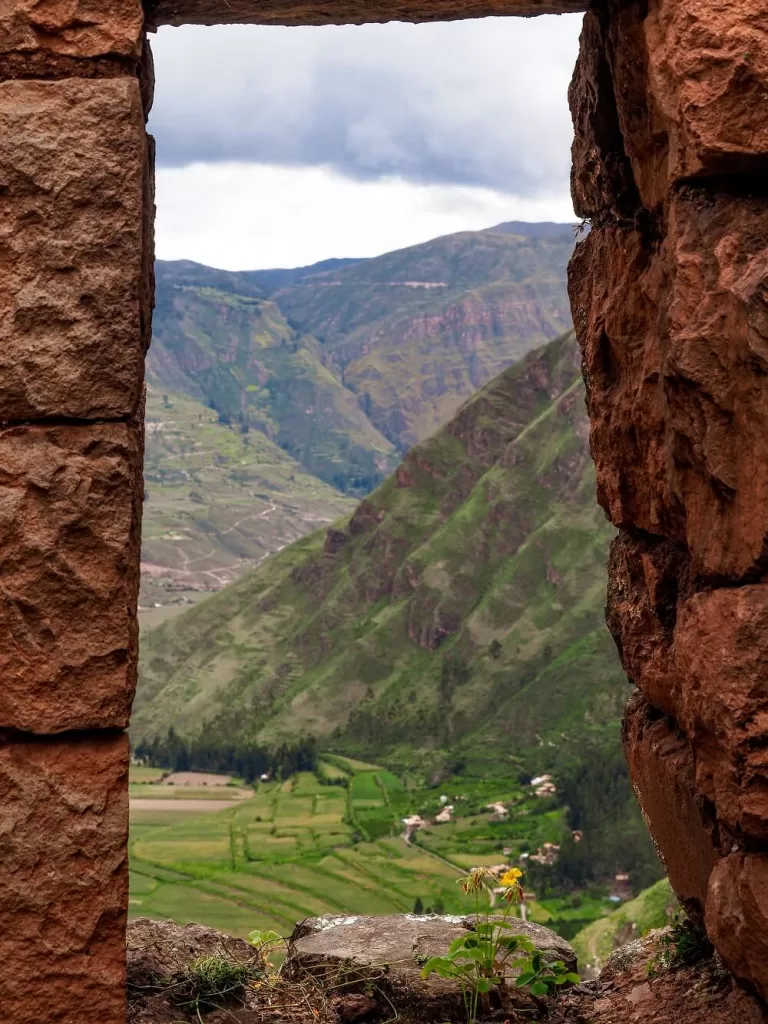
Lower Pisac Ruins
After walking through the lower entrance, you’ll have a steep uphill climb with some terraces to your left. The first structure you’ll arrive to is called the Two Tier House (Casa Dos Pisos) which is a two-leveled storehouse.
From there you’ll reach Pisaq’a (Pisac Old Town), a section that was once a residential area with many structures. You’ll then continue going up to the most sacred site at the Pisac Ruins: Intiwatana (or the Ceremonial Centre).
Intiwatana is basically a sun dial that the Incas used to track the sun’s movements. In this area you’ll also see the Temple of the Sun and the Moon and other temples.
There was a guard patrolling this section, possibly to stop people from climbing onto the structures. He was quite willing to give us some information about the temples. We found this interesting but did feel like some tip was expected for his services. We personally didn’t mind, but make sure to either have some change on you or just simply say no if you don’t want an improvised tour.
After the Intiwatana section, you’ll be walking up to a viewpoint (Mirador). It’s a pretty viewpoint, but you can get gorgeous views from anywhere along the trail.
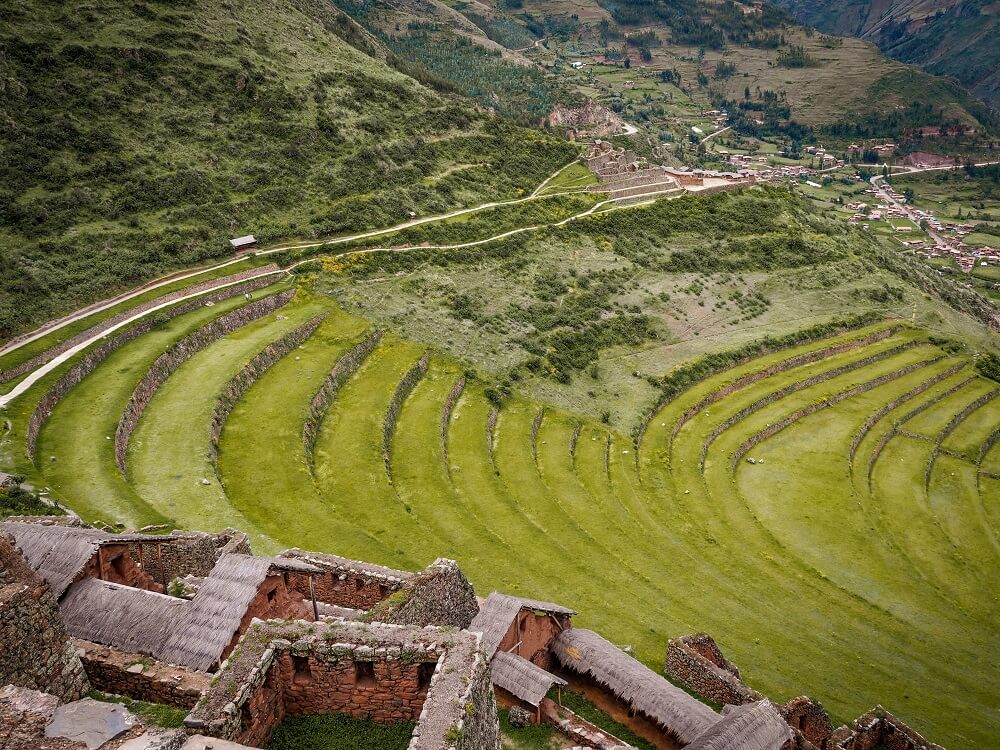
Upper Pisac Ruins
From the Mirador you’ll have to walk through a narrow tunnel. At the other end of the tunnel you’ll reach the next section of the site, the Millitary Zone. The K’allaq’asa or Qallaq’asa used to be a residential and military area, with many houses and lookout towers.
You’ll then walk past the T’antana Marka (Inka Cemetery) and some Ceremonial Baths with some more terraces to your right.
If you’re leaving the site from the upper entrance then your last section will be Qantus Raqay (Urban Area). It was once residential and military structures placed to watch the northeast entrance to the site.
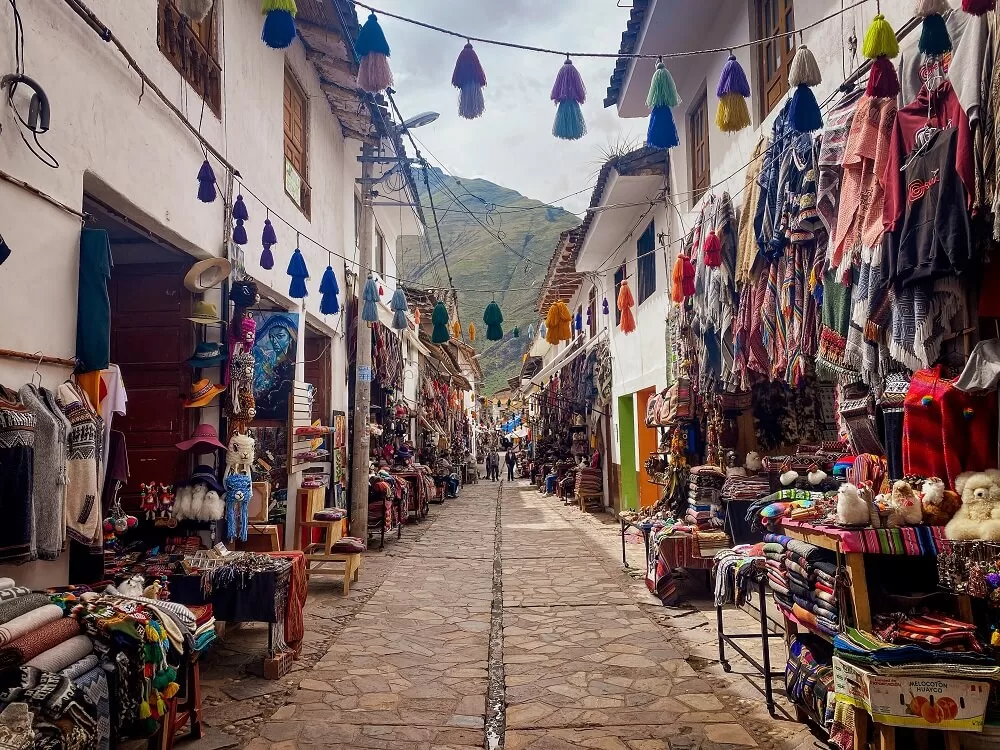
Check Out Pisac’s Artisan Market
Once you’ve finished your tour around Pisac Ruins, make sure to spend some time wandering around the streets of Pisac itself.
Apart from the Inca Ruins, Pisac is a popular place because of its artisan market. Vendors sell everything from colourful textiles to jewellery. We noticed that their prices were a bit lower compared to those in Cusco, so if you’re after some souvenirs then this is the place to get them.
There are loads of places to try some traditional Peruvian food too, and once again, the prices won’t be as high as restaurant prices in Cusco.
We recommend spending at least an extra hour looking around the town before heading back to Cusco. You can even stay a night in Pisac and visit other places within the Sacred Valley such as Ollantaytambo or Maras. We completed an independent 3-day adventure in the Sacred Valley which you can read about by clicking here.
Related Blog Posts You May Like:
- Hiking in the Sacred Valley Without a Guide or Tour (Ollantaytambo, Maras, Moray and Pisac)
- How to Visit Maras and Moray (Salt Mines and Ruins)
- A Guide to Visiting the Ollantaytambo Ruins
- 20 Things to Do in Cusco, Peru – A Complete Guide
- 10 Best Day Trips from Cusco
- The Ultimate 3 Week Peru Itinerary – How to Plan a Trip to Peru
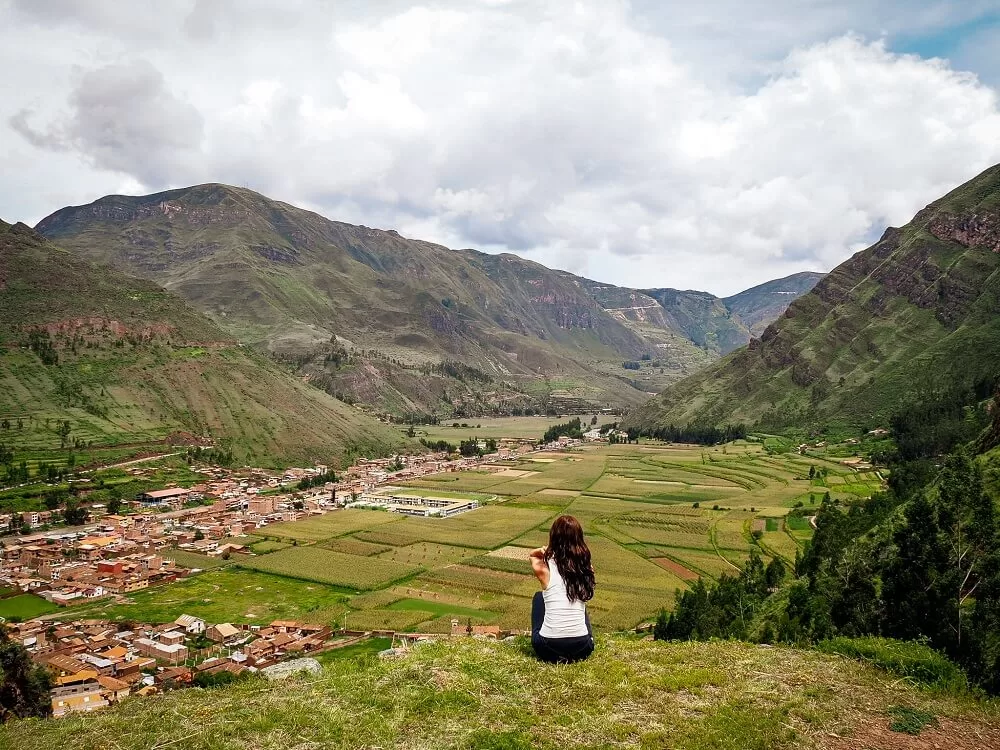
Final Thoughts on Visiting the Pisac Ruins
We absolutely loved our visit to Pisac and it became our favourite Inca Ruins that we visited during our 3-day independent Sacred Valley adventure. The town of Pisac was also a lovely place to walk around. We definitely enjoyed browsing the shops and getting some bargains from the artisan market. Once again, we cannot recommend enough dedicating an entire day to visiting the ruins from Cusco if you’re time allows it. You definitely won’t regret it.
Have you been to the Pisac Ruins before? What was your experience? If not, would you visit the Pisac Ruins? Let us know in the comments below.
Now, let your adventure begin,

Our Top Travel Resources
Accommodation: For hotels we always use Booking.com and Hostelworld for hostels. We also book longer stays on Airbnb or Vrbo.
Flights: To find the best flight prices we always check Skyscanner, Google Flights or WayAway. Then we also check the airlines’ websites too for comparison.
Car Rentals: We use Discover Cars when we want to rent a car as it compares local, national and international companies.
Activities: If we book organised tours we always check either GetYourGuide or Viator.
Foreign Currency: Whenever we can we prefer to pay in local currency and for that we always use our Wise card. We can easily withdraw money from the ATM or pay by card at most shops and restaurants.
Travel Insurance: We never go anywhere without travel insurance. You never know what will happen on your trip, so good travel insurance like SafetyWing can protect you in case of injury, illness, theft and cancellations.
eSIM and VPN: To get data abroad we use Airalo which is an app that allows you to download a prepaid eSIM to your phone in over 190 countries. Make sure to have a VPN to avoid hackers accessing your personal data when using public WIFI. We use Surfshark which is the only VPN that offers one account on unlimited devices.
Remember…It all starts with a Pin…
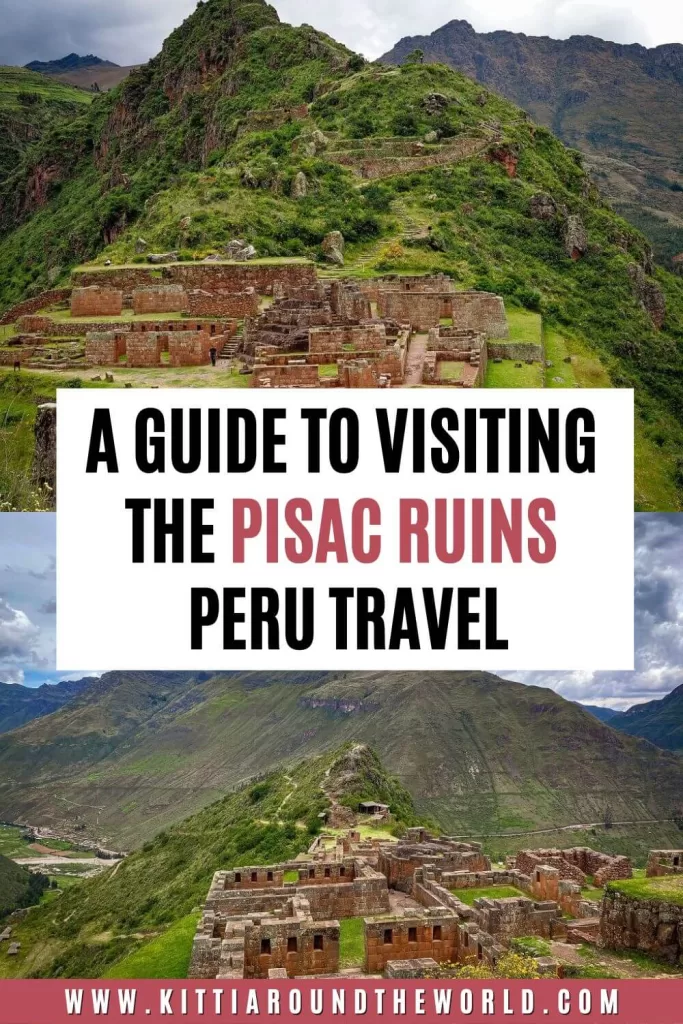
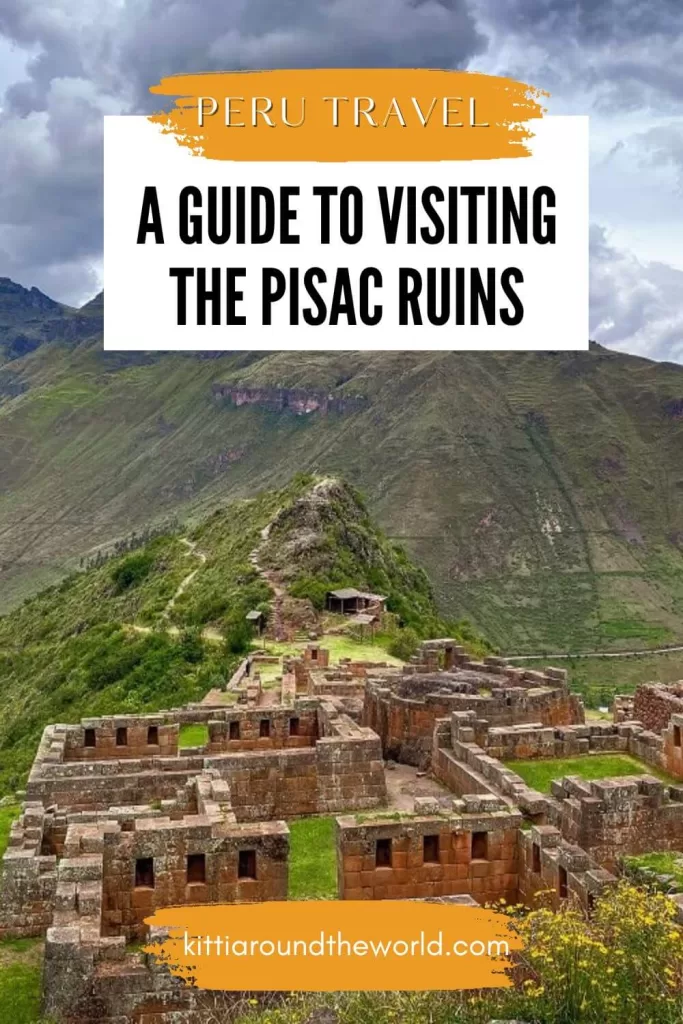

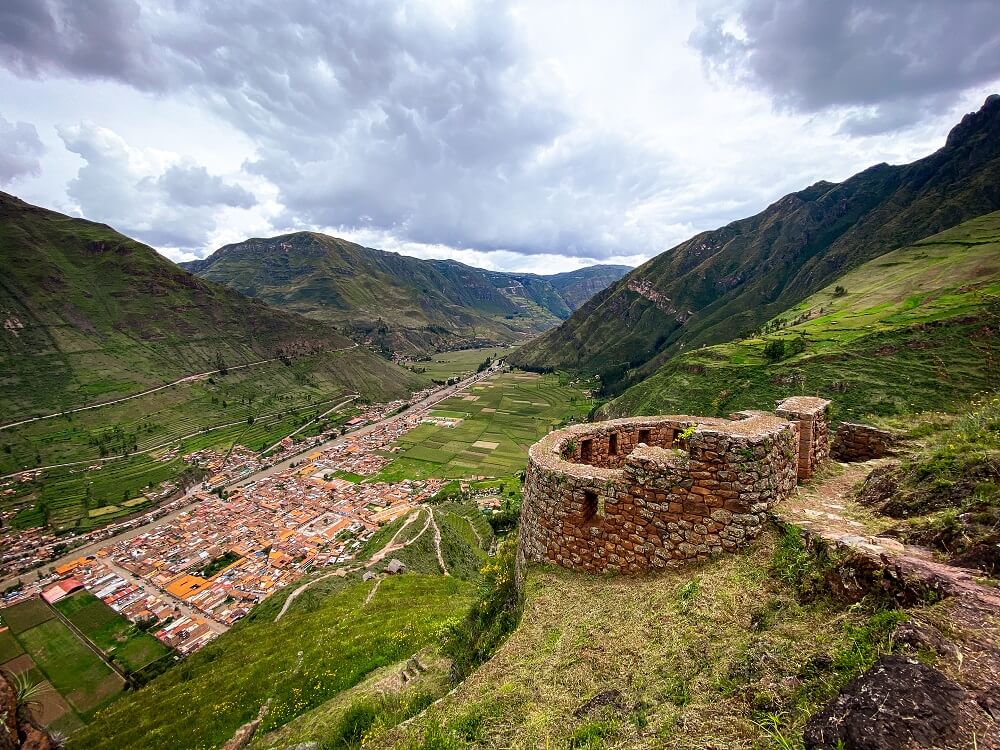

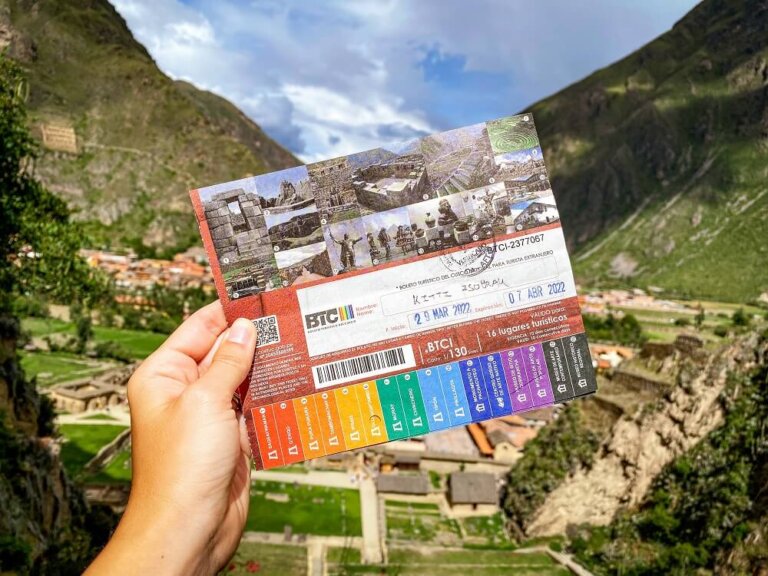
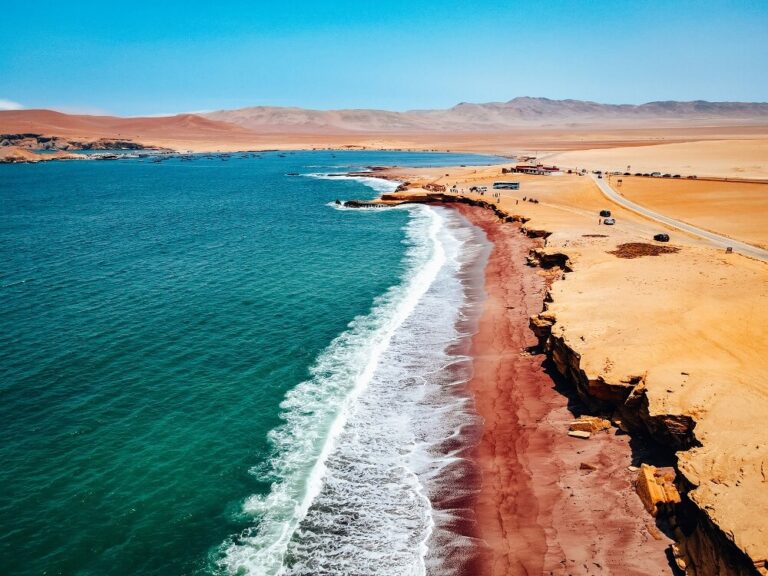
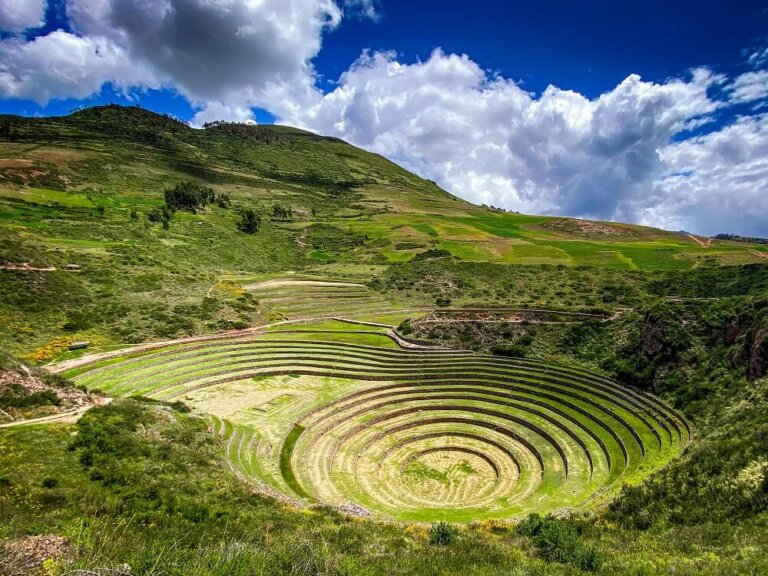

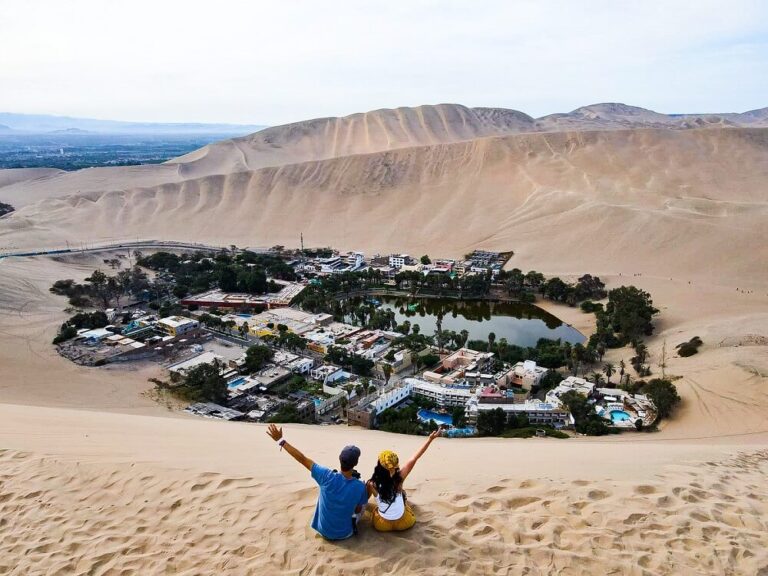
Thanks Kitti! I didn’t know about the Pisac ruins or the Sacred Valley area. Thanks for sharing and for all the useful tips. 🙏x
Thank you Karan, we’re happy that you enjoyed learning about Pisac. It’s such a wonderful place to visit.
The Pisac Ruins look magical and your guide will be very useful for when I visit. Thanks.
Thank you Sharyn, we’re glad that you found the post useful for your future trip to Peru.
I missed these on my trip to Peru but they definitely look like they warrant a return trip! I love visiting archaeological sites when I’m traveling!
It’s a shame you missed Pisac, but you’re right it’s a great reason to return to Peru. There are so many beautiful Inca ruins in the Sacred Valley that’s worth returning for.
I have never even heard of the Pisac ruins! Your photos are so beautiful. Hope to make it there one day!
Thank you for your comment Anna, we’re happy to hear that you enjoyed the post and our photos. Hope you can visit soon.
Your photos are gorgeous! This is such a great, comprehensive guide that covers absolutely everything you need to know before going! I would love to visit the Pisac ruins!
Thank you Jess, we’re glad to hear that you found our Pisac guide useful. Hope you can visit in the near future.
What a breathtaking place! Just wow and the kind of place I love to visit and explore. Thank you for sharing, going on the list!
Thank you so much Sarah-Jayne, we’re happy to hear that Pisac is landed on your bucket list. Hope you can visit soon.
Fantastic blog with so much detailed information. This will certainly come in handy for when we start planning our trip to Peru. Thanks so much!
Thanks Kim, we’re glad to hear your positive feedback on our post. Hope you can visit Peru soon.
I wasn’t aware of these ruins (beautiful photos btw) and will now have to add them to the list of things to see when in Peru, thank-you!
Thank you so much we’re happy that you liked our post and photos too. Hope you can visit the Pisac Ruins and Peru soon.
Thanks for sharing – your guide is really helpful! Pisac is definitely on my travel list!!
Thank you Chanelle, I hope you can visit Pisac in the near future.